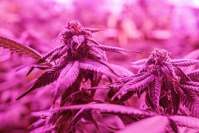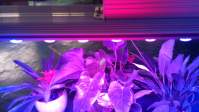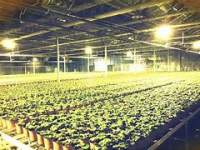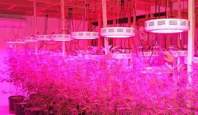The importance of LED plant lights to the light compensation point of plants in Yaorong, Shenzhen, Guangdong, China
The intensity of photosynthesis of any kind of crop is closely related to the intensity of light. The photosynthetic intensity changes with the trend of light intensity, but when the light is increased to a certain degree, the photosynthetic intensity is no longer added, and the light intensity at this time is the full point of photosynthesis. When the light is weakened to a certain limit, the photosynthetic intensity cannot be measured (the photosynthetic intensity and the respiratory intensity are exactly the same, the ratio is 1), and the light intensity at this time is called the photosynthetic light compensation point.
LED plant light is a kind of light that emits special light waves, which are suitable for absorption during photosynthesis of plants. The LED grow light uses mature energy-saving lamp technology. A large number of experimental results have proved that under the condition of ensuring the temperature in the greenhouse, it can promote the photosynthesis of plants, and it is an indispensable light supplement device in off-season cultivation.
The mass customization of LED plant lights is driven by market demand, and greenhouses are widely used to produce off-season flowers, fruits and vegetables. Most parts of the north are located in a temperate monsoon climate. In winter and spring, affected by the southward movement of cold air from Siberia, rain and snow sometimes form due to the convergence of cold and warm air. 1-3 days with low temperature and little light, 7-8 days or even cloudy days with little light. The disaster of insufficient sunlight is becoming more and more serious. When the light intensity is lower than its compensation point, the consumption of organic matter exceeds the accumulation, and the dry weight of plants decreases. Plant growth is also weak.
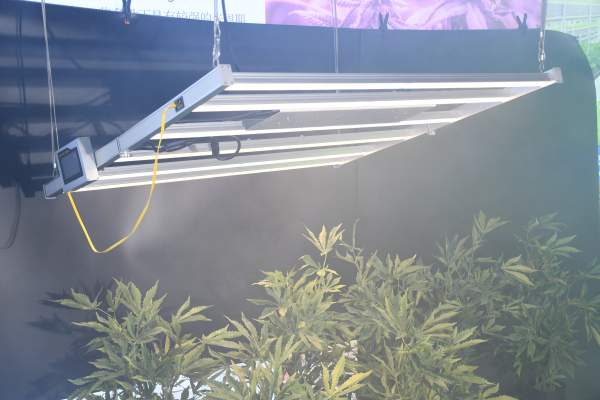
The led full-spectrum fill light can solve the problem of insufficient sunshine in the vegetable greenhouse on rainy and foggy days, so that the plant has a high flowering and fruiting rate and a good fruit shape. Installing LED full-spectrum growth lights in the greenhouse in winter can increase vegetable output by 12%-19%. Put flowers and fruits and vegetables on the market 7-15 days in advance, increase the brightness of flowers, and improve the sweetness and taste of fruits and vegetables.
More use of LED plant lights to provide light energy for plant growth and development is the only development direction for plant cultivation. LED plant lights will be an important technical measure for industrialized high-yield cultivation and stable production. More and more artificial light sources are applied to actual production and life to adjust the light environment of our production and life.
According to the plant photosynthesis spectrum and chlorophyll absorption spectrum, we can choose a light source product that meets the needs of this spectrum. In order to meet this spectrum demand, the light source products that can meet this demand are mainly LED plant lights, the red color is between 600-700nm. The ratio of the blue spectrum and the red spectrum can be adjusted by adjusting the formula of the phosphor.
The growth process of plants is completed by light regulation. The growth process involves photosynthesis, photoperiod regulation and photoecological formation. The absorption of light by plants is not in the whole waveband, but selective. Light regulates the entire growth and development of plants in order to better adapt to the external environment. This kind of changes in cell differentiation, structure and function that rely on light control will eventually be inherited to the establishment of tissues and organs and become a process of light morphogenesis, that is, light control development. Light plays a signal role in photomorphogenesis, which is different from the energy role in photosynthesis.
The light saturation point and light compensation point of plants vary with crop varieties and cultivation conditions. Some negative plants reach fullness in less than 10,000 lux, while positive plants need tens of thousands of lux to reach fullness. Some four-carbon (C-port plants) are often not fully full when exposed to direct sunlight at noon (about 100,000 lux). Usually three-carbon (Ca) plants have a lower fullness point than four-carbon (C,) plants.
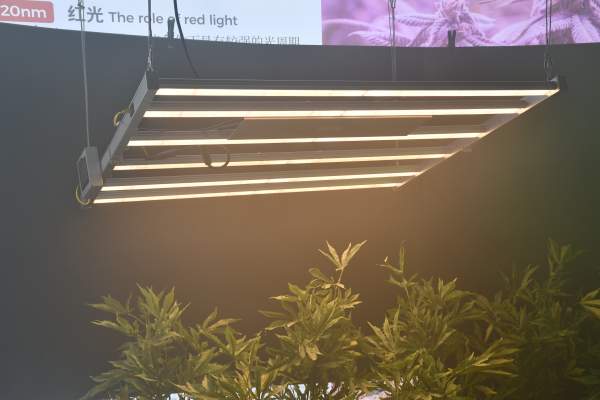
If plants grow up due to lack of sunlight in the environment, such as the cultivation of basements and balconies. Artificial light is required to replace sunlight to provide the energy required for photosynthesis for plant growth. The light intensity of the required light source must reach the light compensation point required by the cultivated plant to grow normally.
Below the light compensation point, the plants grow slenderly and may grow slowly; above the light full point, the photosynthetic rate is no longer added, presenting a scene of light suppression, causing light energy to be spoiled. The light intensity is between the light full point and the light compensation point. Using Guangdong Shenzhen LED plant lights to grow fruits and vegetables can promote photosynthesis of plants, shorten the growth cycle, and go on the market faster. The yield of crops has also increased, and the fruits have been improved. The taste, sweetness, quality and appearance.
Characteristics of 800wled full spectrum growth lamp
1. Specialization
The spectrum and light quantity of LED plant lights can be adjusted and timed, and the water resistance is very high, which promotes the development of planting collars. The spectrum emitted by LED plant lights can meet the spectrum required by plants at any time, so that the growth state and growth cycle of plants are not affected. Faster and reflect more professional LED grow lights.
2. High efficiency
The improvement of luminous efficiency and energy efficiency is the key to greatly reducing the operating cost of plant lighting, and it is the inevitable trend of refined agriculture in the future. In terms of improving yield, according to the developmental characteristics of plants, it can be cultivated in stages and regions combined with light formula to improve the production efficiency and yield of each stage; in terms of improving quality, LED plant lights can be used to regulate and control the spectrum of plants. Improve the content of nutrients and other health functional ingredients.
3. Intelligent
LED plant lights have a strong demand for real-time control of light quality and light quantity. With the improvement of intelligent control technology and the application of the Internet of Things, a variety of monochromatic spectrum and intelligent control systems realize time control, light control, and according to the growth of plants. The light quality and light quantity output adjusted in a timely manner will inevitably become the main trend of the future development of plant lighting technology.
LED plant lights control photoperiod
Plants, like humans, also need time to rest. Long-term supplementary light does not have a good effect on the growth of plants. Plants are just like people’s work and rest time. This is the photoperiod of plants.
If it is not affected by people in the natural environment, then each plant adapts to the natural environment to form its own photoperiod and survives in this uncontrollable natural environment. But if it is an artificial cultivation environment with LED plant lights, we can control the photoperiod of plants by adjusting the spectrum of LED plant lights.
LED grow lights control light intensity
The light intensity will affect plant cell proliferation and the differentiation of seedlings, buds and roots, and indirectly affect the growth of plants. Different light intensity corresponds to the various stages of plant growth. In the early stage of plant growth, too much light is not required, which can satisfy Plants need to germinate and grow. With the growth of plants, the light intensity should be increased appropriately, which is very important for the healthy and neat degree of seedlings. When the plants bloom and bear fruit, LED plant lighting directly affects the flowering period and fruit setting rate, and also Determine the yield and quality of this plant.
LED plant lights control light quality
The quality of led full-spectrum growth light is mainly the choice of lamp beads. LED plant lights generally include red light beads, blue light beads, white light beads and full-spectrum lamp beads. Numerous experiments by scientists have proved that the light required for plant growth is For red light and blue light, most users choose red and blue light beads, but there are not only plants that need red and blue light, so when choosing light beads, you need to customize the light beads according to the light quality required for the growth of the plant.
By controlling and adjusting the LED full-spectrum supplement light lamp, it can better supplement the light to the plant and reach the light compensation point required for the growth of the plant.


